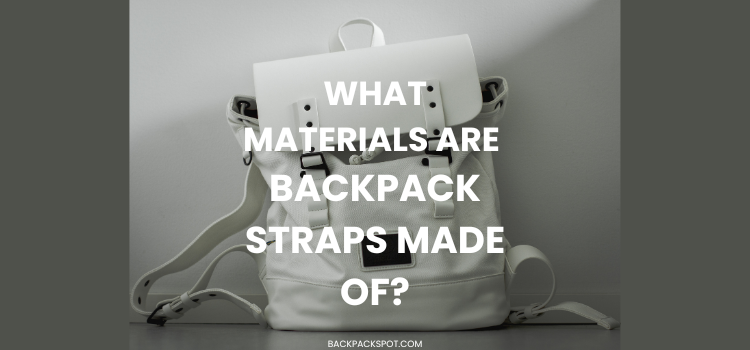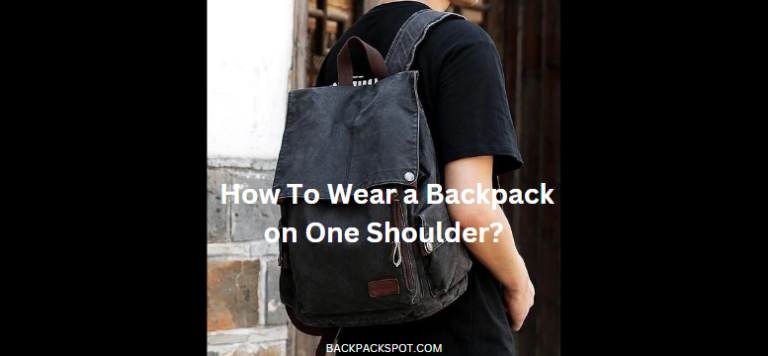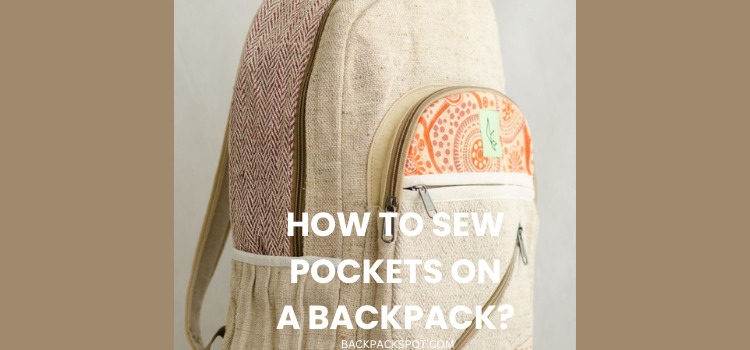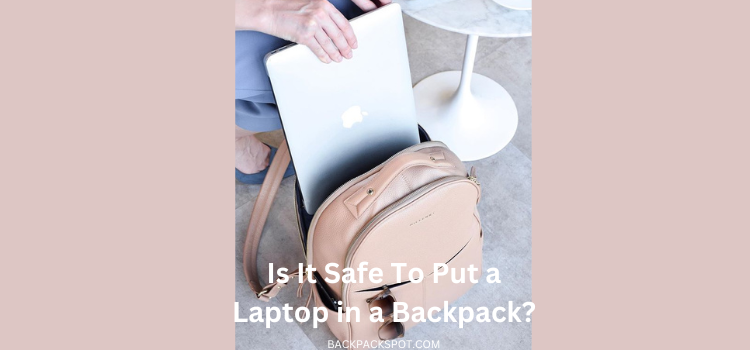What Material Are Backpack Straps Made Of? Check it out!
Backpacks are usually thought of in terms of their style, size, and capacity. One crucial aspect often overlooked is the material used in its construction, especially the strap material. Have you wondered what material are backpack straps made of?
Backpack straps are made of various materials, including nylon, polyester, mesh, foam, and neoprene. Each material has its advantages and disadvantages, so it’s important to choose the one that best meets your needs.
This article explores backpack strap material options, their pros and cons, and factors to consider when choosing the right material. Let’s get started!
Importance of Backpack Straps
Backpack straps are not just a simple accessory; they are the bridge between your back and the backpack itself. The choice of material for these straps can significantly impact your overall backpacking experience. Here’s why:

Comfort
Comfort is paramount when carrying a backpack, especially on long journeys. The material of your backpack straps can make the difference between a comfortable hike and an uncomfortable, painful one. The right material should be soft on your skin, distribute weight evenly, and reduce pressure points.
Durability
Backpack straps endure a lot of wear and tear, from constant adjustments to the weight of your load. Choosing durable materials ensures your backpack straps can withstand the test of time.
Load Distribution
Proper load distribution is essential for preventing backaches and discomfort. The material of your straps should aid in distributing the weight evenly, so you don’t strain your shoulders and back.
Weight
The material of your backpack straps can significantly affect the overall weight of your backpack. Lighter materials are advantageous for reducing the burden on your shoulders.
Consider reading 10 Tips How To Find a Quality Backpack? (Ultimate Guide)
What Material Are Backpack Straps Made Of?
Backpack straps can be made from various materials, each with its unique characteristics and benefits. Let’s explore some of the most commonly used materials:

1. Nylon
Nylon is one of the most popular materials for backpack straps due to its durability and versatility. It’s a synthetic polymer known for its strength, abrasion resistance, and ability to withstand harsh weather conditions.
Pros of Nylon
- Durability: Nylon straps can endure extensive use and are less likely to fray or tear.
- Weather Resistance: Nylon is resistant to moisture, making it suitable for outdoor activities.
- Cost-Effective: Nylon straps are often more affordable than some other materials.
Cons of Nylon
- Limited Stretch: Nylon lacks the elasticity of some other materials, which can affect comfort.
- Less Breathable: It may not be as comfortable in hot weather due to reduced breathability.
Also, read How To Extend Backpack Lifespan? Tips and Tricks
2. Polyester
Polyester is another synthetic material commonly used in backpack straps. It’s known for its strength, resistance to stretching, and ability to retain its shape.
Pros of Polyester
- Strength: Polyester straps are sturdy and can handle heavy loads.
- Minimal Stretch: They don’t stretch easily, ensuring your backpack retains its shape.
- UV Resistance: Polyester is less susceptible to UV damage compared to some other materials.
Cons of Polyester
- Slightly Less Durable: While durable, it may not be as tough as nylon.
- Limited Breathability: Polyester may not be as breathable as some natural materials.
3. Mesh
Mesh straps are often seen in hiking and ultralight backpacks. They are typically made from a combination of materials, including nylon and polyester, and are designed to be lightweight and breathable.
Pros of Mesh
- Lightweight: Mesh straps are extremely light, making them suitable for ultralight backpacks.
- Breathable: The mesh design enhances air circulation, reducing sweat and discomfort.
- Comfort: They conform to your body shape, providing a comfortable fit.
Cons of Mesh
- Durability: Mesh straps may not be as durable as solid materials for heavy loads or rough terrain.
- Limited Load Capacity: They are best suited for lightweight backpacks.
4. Foam
Foam straps are designed for maximum comfort. They are often combined with other materials like nylon or polyester to provide padding and support.
Pros of Foam
- Comfort: Foam straps provide a cushioned, comfortable feel on your shoulders.
- Weight Distribution: They distribute the load evenly, reducing pressure points.
- Custom Fit: Foam molds to your body, providing a tailored fit.
Cons of Foam
- Durability: Foam may not be as durable as some other materials.
- Limited Versatility: Foam straps are typically used in specific types of backpacks.
5. Neoprene
Neoprene is a synthetic rubber material known for its stretchability and water-resistant properties. It’s often used in backpack straps to provide a balance of comfort and durability.
Pros of Neoprene
- Stretchability: Neoprene straps adapt to your body shape, enhancing comfort.
- Water Resistance: They repel moisture, ensuring your straps remain dry.
- Soft Feel: Neoprene is gentle on the skin.
Cons of Neoprene
- Limited Durability: Neoprene may not be as durable as some other materials.
- Not Ideal for Heavy Loads: It’s best suited for lighter backpacks.
Factors to Consider When Choosing Backpack Strap Material
The choice of backpack strap material depends on your specific needs and preferences. Here are some factors to consider:

1. Intended Use
Consider the type of activities you’ll be engaging in with your backpack. Different materials are better suited for hiking, travel, or everyday use.
2. Load Capacity
If you’ll be carrying heavy loads, opt for durable materials like nylon or Cordura. For lighter loads, lightweight options like mesh or neoprene may suffice.
3. Climate
Think about the weather conditions you’ll encounter. If you’ll be in wet environments, choose materials that are water-resistant.
Here’s a complete post about How To Extend Backpack Lifespan? Tips and Tricks
4. Comfort
Your comfort is essential. Look for materials that are gentle on your skin and provide sufficient padding.
5. Budget
Finally, your budget plays a role in the decision. Some materials are more cost-effective than others, but investing in quality straps can pay off in the long run.
Conclusion
I hope you get the answer to your question What material are backpack straps made of? Consider the factors discussed in this article when making your selection. By choosing the right material, you can ensure that your backpack straps provide the support and longevity you need!
FAQs
Q: Can I replace backpack straps with different materials?
A: In some cases, you may be able to replace backpack straps with different materials, but it’s essential to consider compatibility with the backpack’s design and stitching.
Q: What type of foam is commonly used in backpack straps?
A: Closed-cell foam is a common choice for its lightweight and water-resistant properties.
Q: How can I adjust backpack straps for the best fit?
A: Most backpacks come with adjustable straps that can be customized to fit your body comfortably. You can use slide adjusters or buckles for this purpose.
References
https://ariaprene.com/uncategorized/backpack-strap-material/#:~:text=Backpackut
https://gearuphiking.com/what-are-backpack-straps-made-of/
https://backpacks.global/what-material-are-backpack-straps-made-of/






